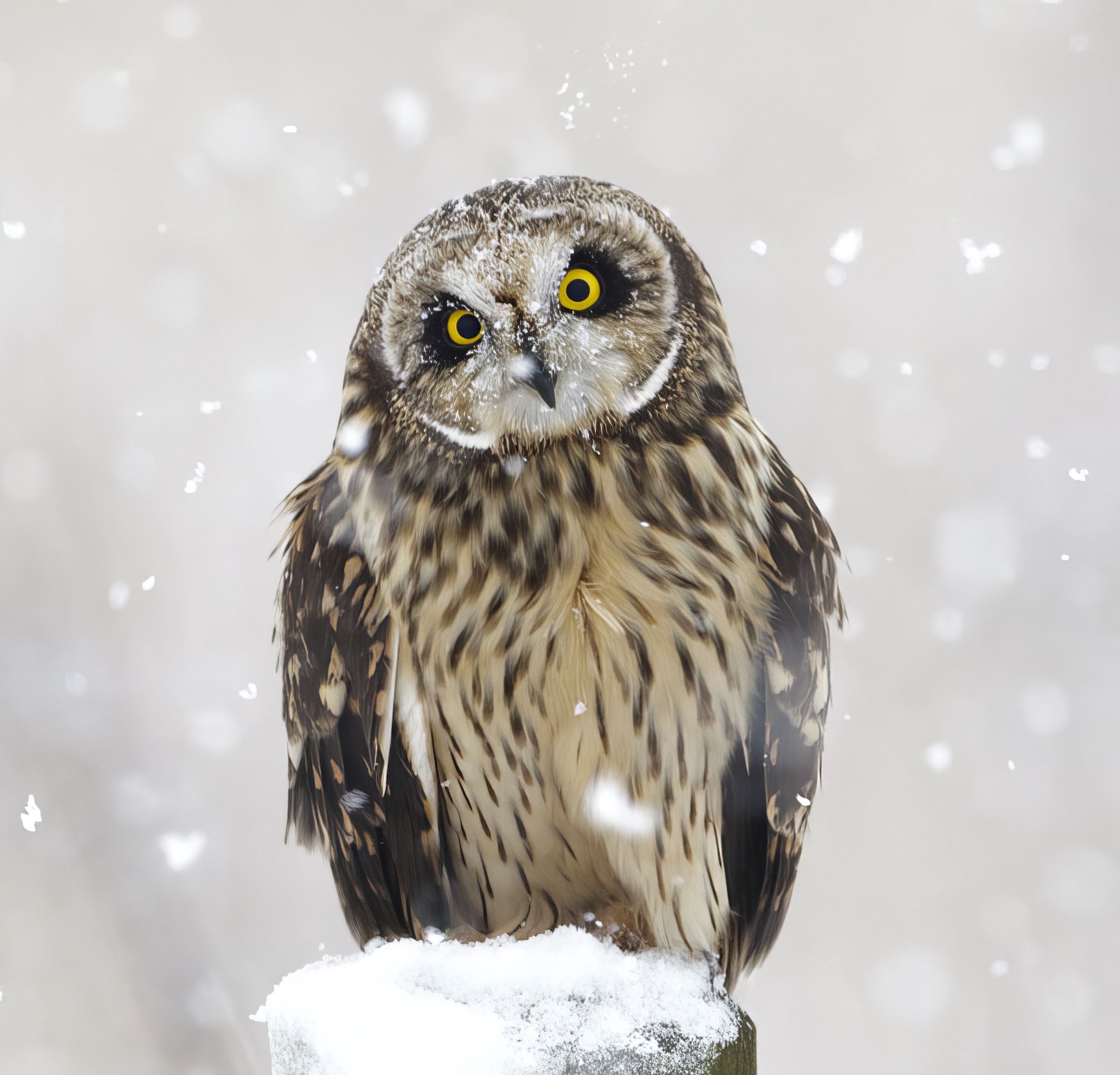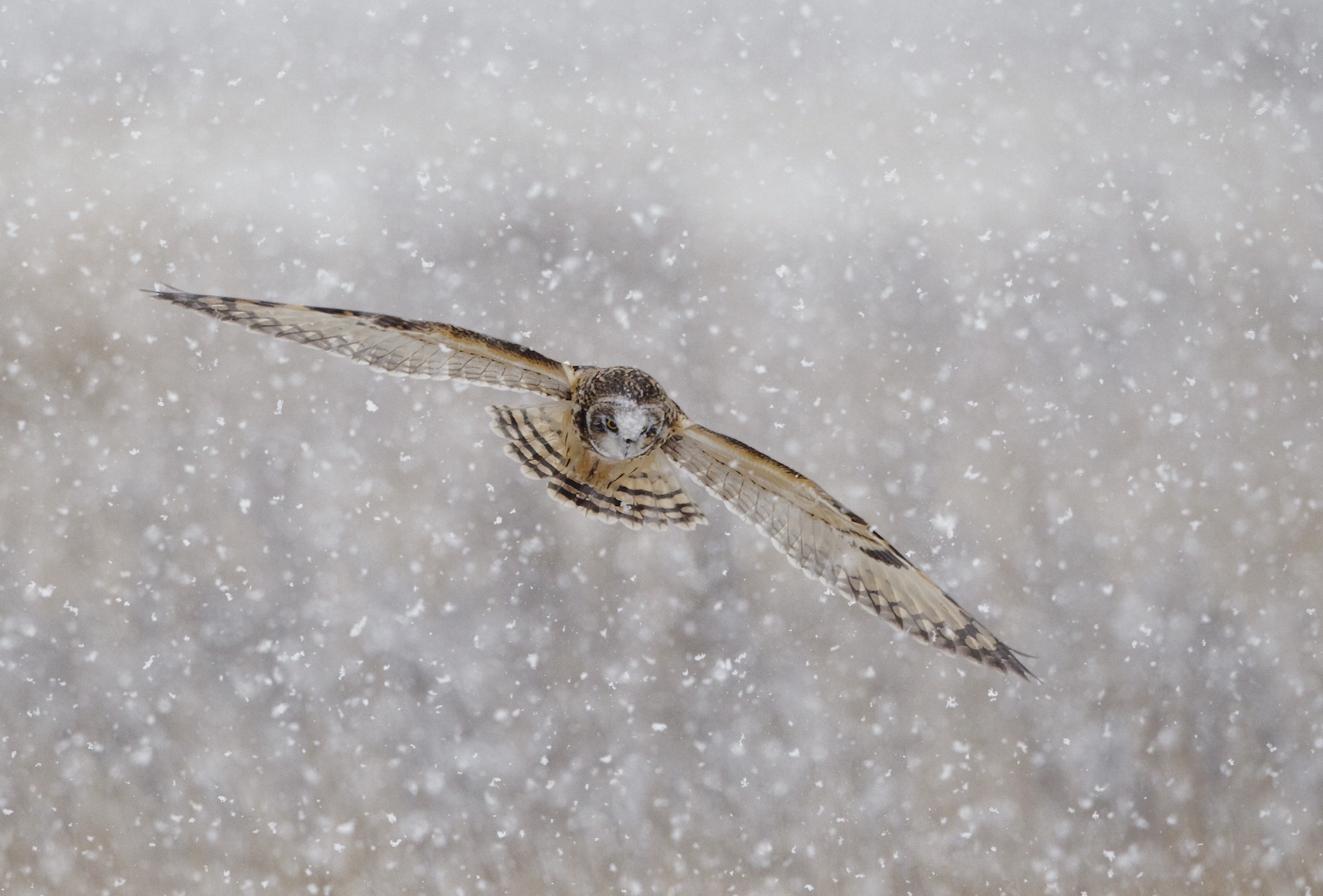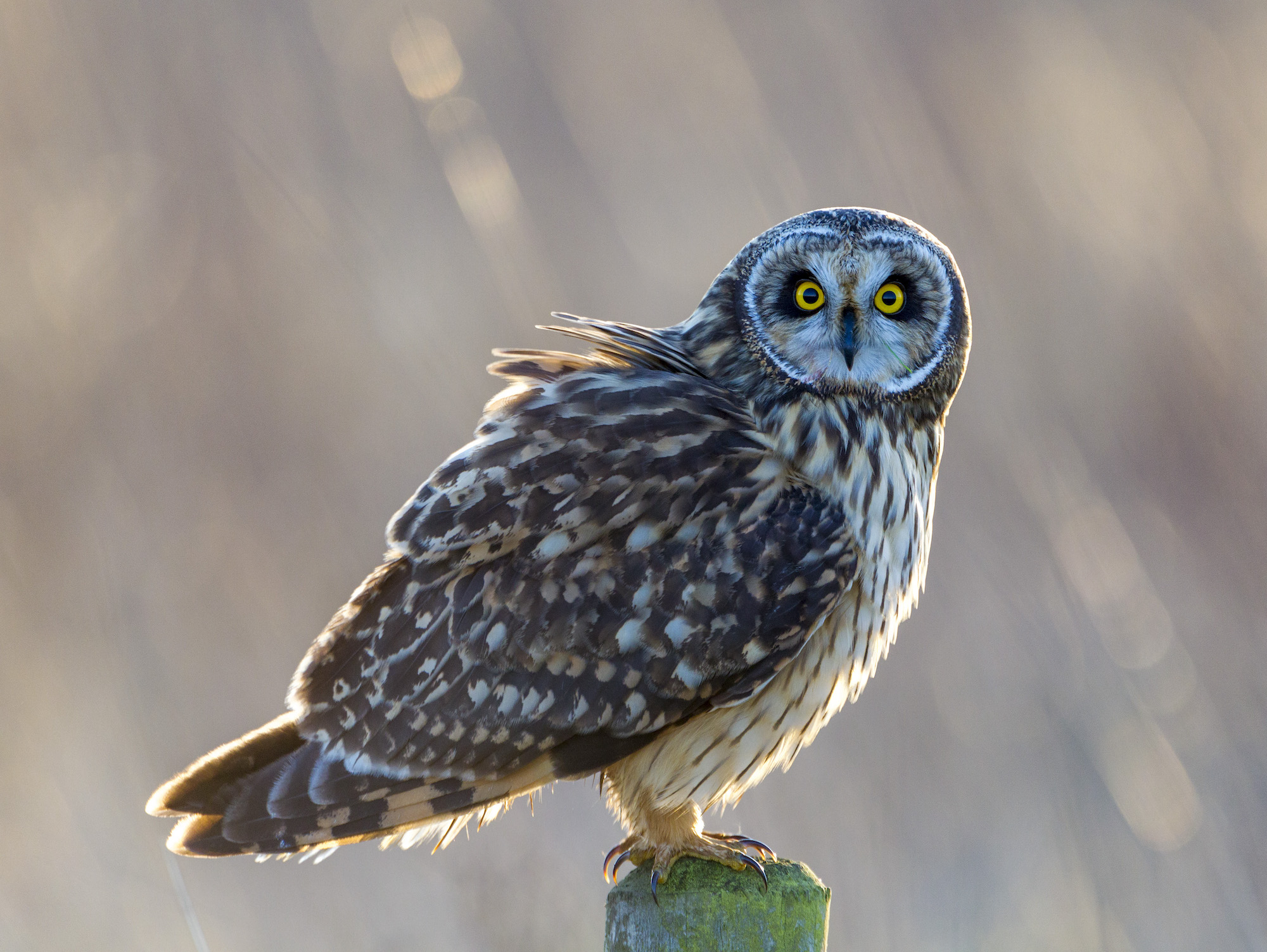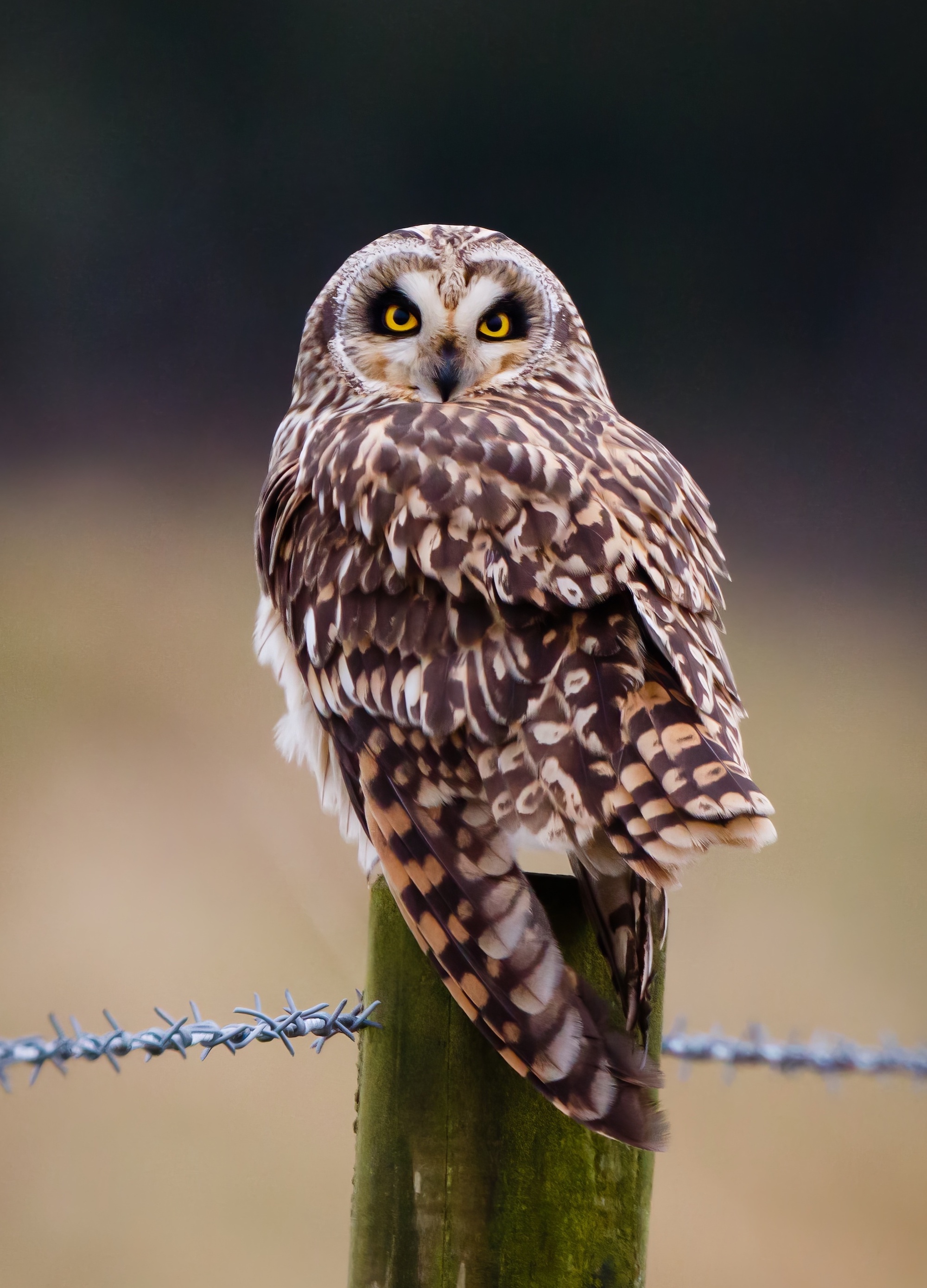Short-eared Owl Asio flammeus
Scarce winter visitor and occasional breeder.



Short-eared Owl at Worlaby on November 28th 2010 (Graham Catley).

Short-eared Owl at Elm House Farm, Saltfleetby St. Peter on January 16th 2017 (John Clarkson).
Recent advances in radio-tracking have shown that Short-eared Owls can roam large distances in different directions across Europe looking for suitable feeding and breeding habitat and breeding in different countries between breeding seasons. These birds are perhaps the original European migrant moving between countries as it suits them. Sadly, over the last five years it would appear that Lincolnshire has suited Short-eared Owls increasingly less. RBBP records show an average of just one pair per year bred during the period 2013-2017. It has never been a big breeder in Lincolnshire and back in the 1980s the Atlas indicated there were only up to 10 pairs per year, declining to five a year in the 1990s. Even as far back as the 1860s, Cordeaux (1872) considered them a winter visitor. LBR reports for the seven years from 2012 to 2018 show that total peak counts across the county ranged from 24 in November 2014 to 69 in April 2012, with an average of 44. Interestingly, the peak count can arise in any month from October-May indicating the flexibility of Short-eared Owl movements. The largest aggregations were 13 at Worlaby Carrs in January 2013 and 12 at the same site in November-December 2012. The next largest was 10 at Hawthorpe in January 2017.
Ringing recoveries show that British-ringed birds have come from northern England and Scotland. An adult ringed at Gibraltar Point was recovered in Sweden and a nestling ringed in The Netherlands was found dead in the south of the county.
(Account as per new Birds of Lincolnshire (2021), included October 2022)
